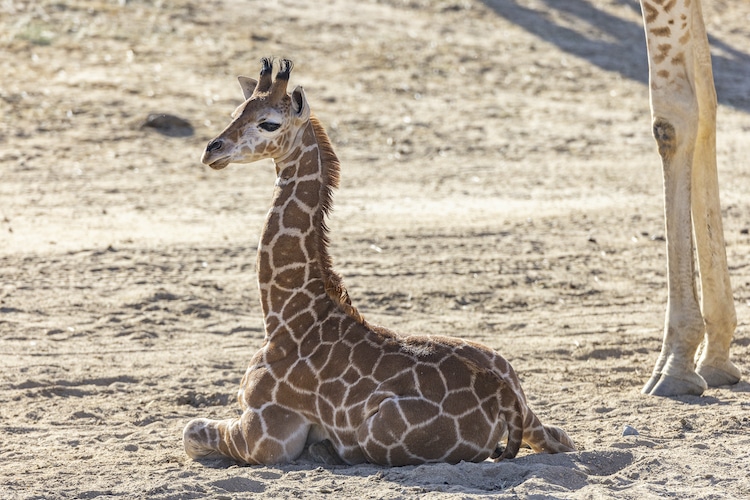
Few animals walk as tall as giraffes, but for a precious female giraffe calf named Msituni (pronounced see tune nee)—which means in the forest in Swahili—it was a struggle to stand up and walk alongside her fellow bespeckled friends. The now 3-month-old giraffe was born at the San Diego Zoo Safari Park with a condition called carpal hyperextension, which affects the bones in her legs, similar to those in a human wrist.
The hyperextension of the joint was causing Msituni’s legs to bend abnormally, which resulted in difficulty standing and walking and could have endangered the young calf’s life. But thanks to professional treatment, now the growing giraffe has a new spring in her step. In collaboration with orthotists from the Hanger Clinic, the team at the San Diego Zoo Wildlife Alliance decided that custom orthotic braces would be the best course of action to mend Msituni’s fragile limbs.
Though the Hangar Clinic primarily focuses on orthotic and prosthetic care for humans, they were able to develop a specialized plan for Msituni’s recovery. And after several fittings, they produced custom-molded orthotic braces from cast moldings of the baby giraffe’s legs. They even added a giraffe pattern to the exterior so that the braces would have a more natural look.
“We are so glad to have the resources and expertise to step in and provide this young calf the opportunity for a full life,” San Diego Zoo Safari Park’s senior veterinarian, Matt Kinney, DVM, said in a statement. “Without these lifesaving braces to provide support, the position of her legs would have become increasingly more painful and progressed to a point she would not have been able to overcome.”
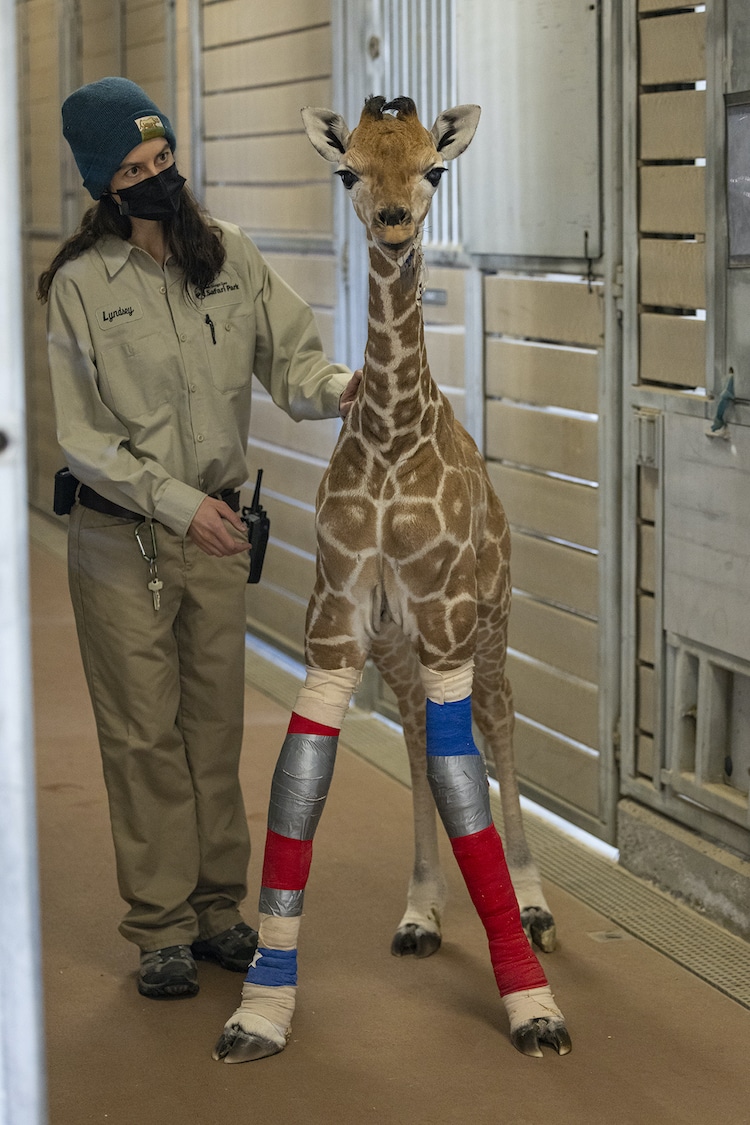
It doesn’t help that, in addition to the trouble with her legs, Msituni was also battling other serious illnesses after she was born. The Zoo Safari Park staff had to treat her with intravenous antibiotics for abnormalities in her blood, and they also had to provide special hoof extenders to correct the irregular position of her back legs. But in the end, all the baby giraffe’s treatments were successful.
These days, Msituni is no longer on antibiotics, and she doesn’t use her leg braces anymore either. Plus, now that her legs are correctly positioned, she is even starting to put on a healthy height and weight while continuing to build up her strength. She’s done so well that the wildlife care team at the Zoo even decided to introduce her to the rest of the giraffe herd in the Safari Park’s East Africa savanna habitat. Some of the young giraffe’s companions include an adult female giraffe named Yamikani and her female calf named Nuru, who was born just four days after Msituni.
“This was an important step in Msituni’s natural development,” says the Safari Park’s director of wildlife care, Kristi Burtis. “As her bond grows with the herd, she will be able to learn behaviors and skills important to the development of a young giraffe.”
With scientists estimating there to be fewer than 100,000 giraffes left in their native habitats—a decrease of more than 40% over the last 20 years—Msituni’s recovery is made even more special.“The birth of every animal is a cherished event,” Kinney adds, “and Msituni’s survival in the face of so much adversity makes it all the more remarkable.
Msituni, a baby giraffe at the San Diego Zoo Safari Park, was born with a condition that caused her to need custom leg braces to walk.
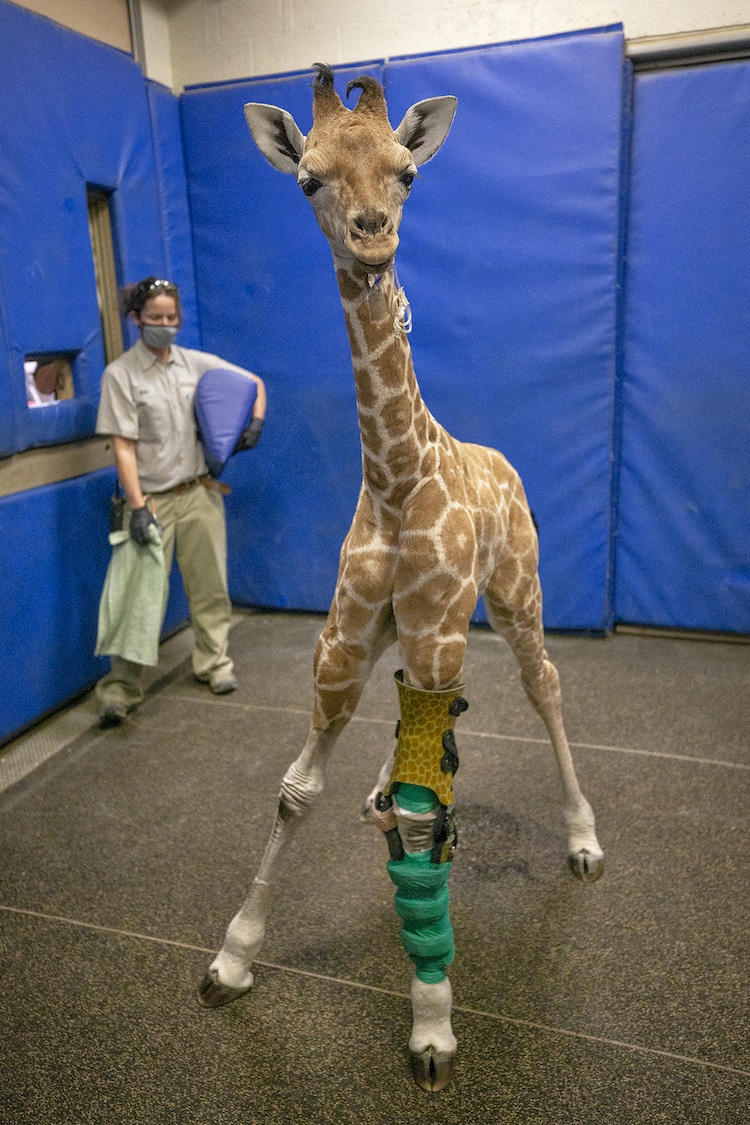
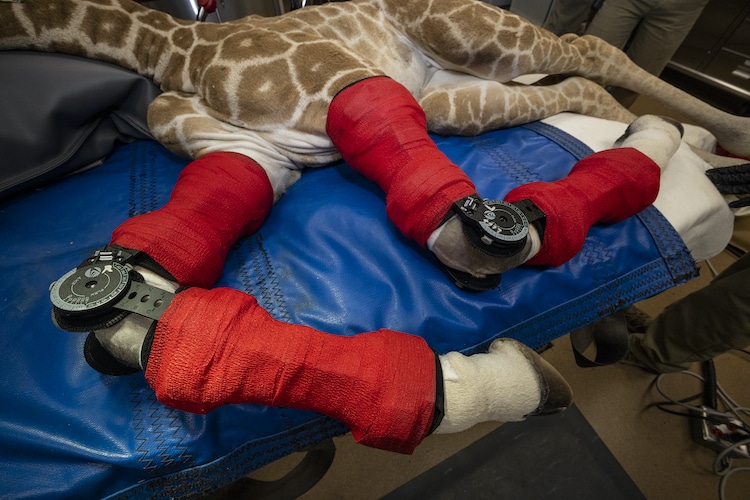
But now thanks to special treatment, the giraffe calf is growing healthy and standing tall.
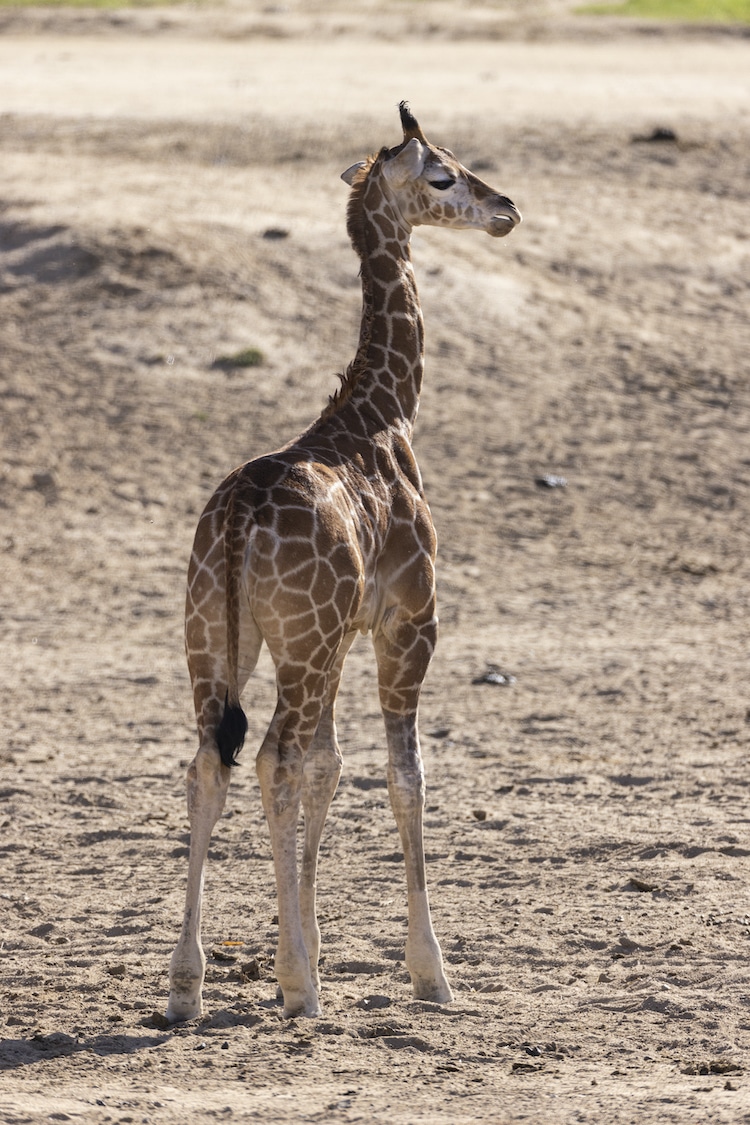
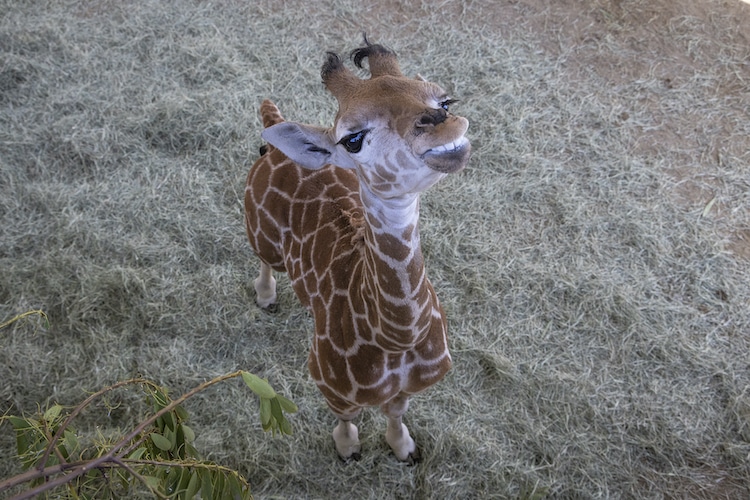
Watch this video to learn more about Msituni’s story.
View this post on Instagram
San Diego Zoo Safari Park: Website | Instagram | Facebook | Twitter | TikTok
h/t: [People]
All images via SDZSP.
Related Articles:
Scientists Find First Known Dwarf Giraffes in Namibia and Uganda
Giraffes Left Stranded by Flooding in Kenya Are Dramatically Rescued by a Special Barge
These Life-Sized Giraffe Sculptures Hold Chandeliers in Their Mouths
